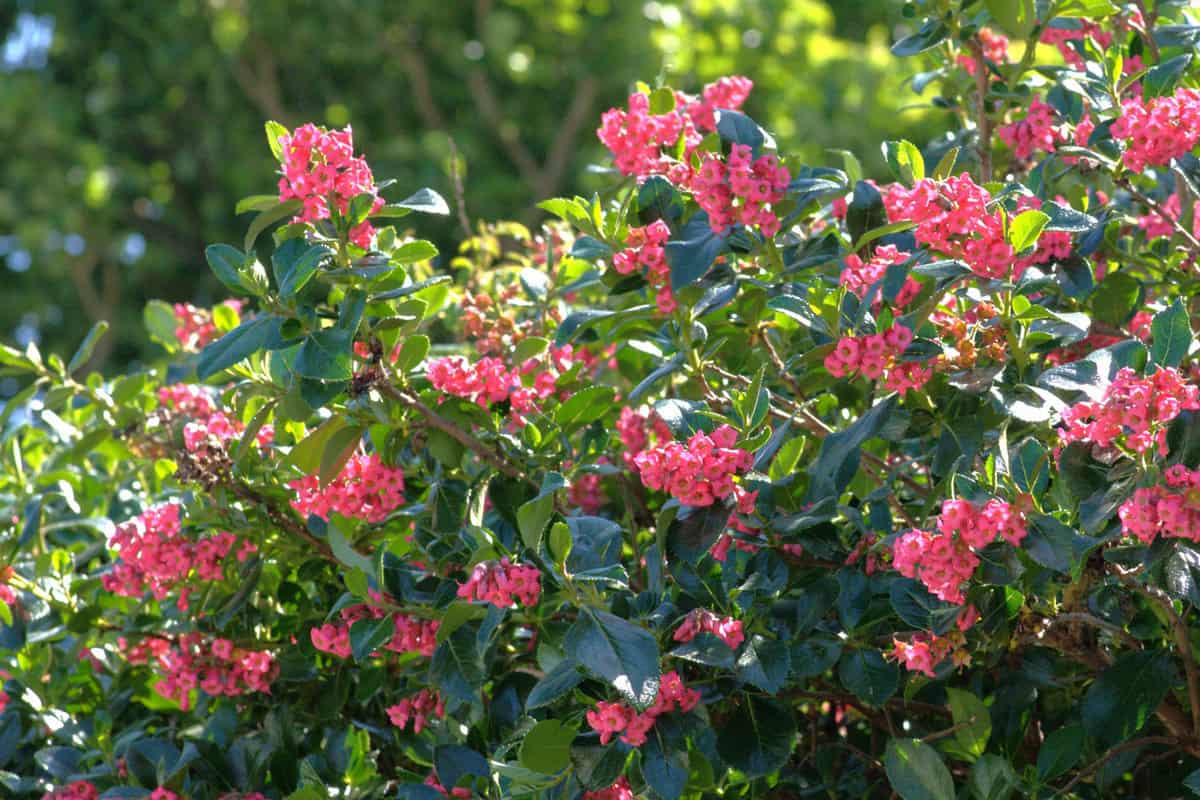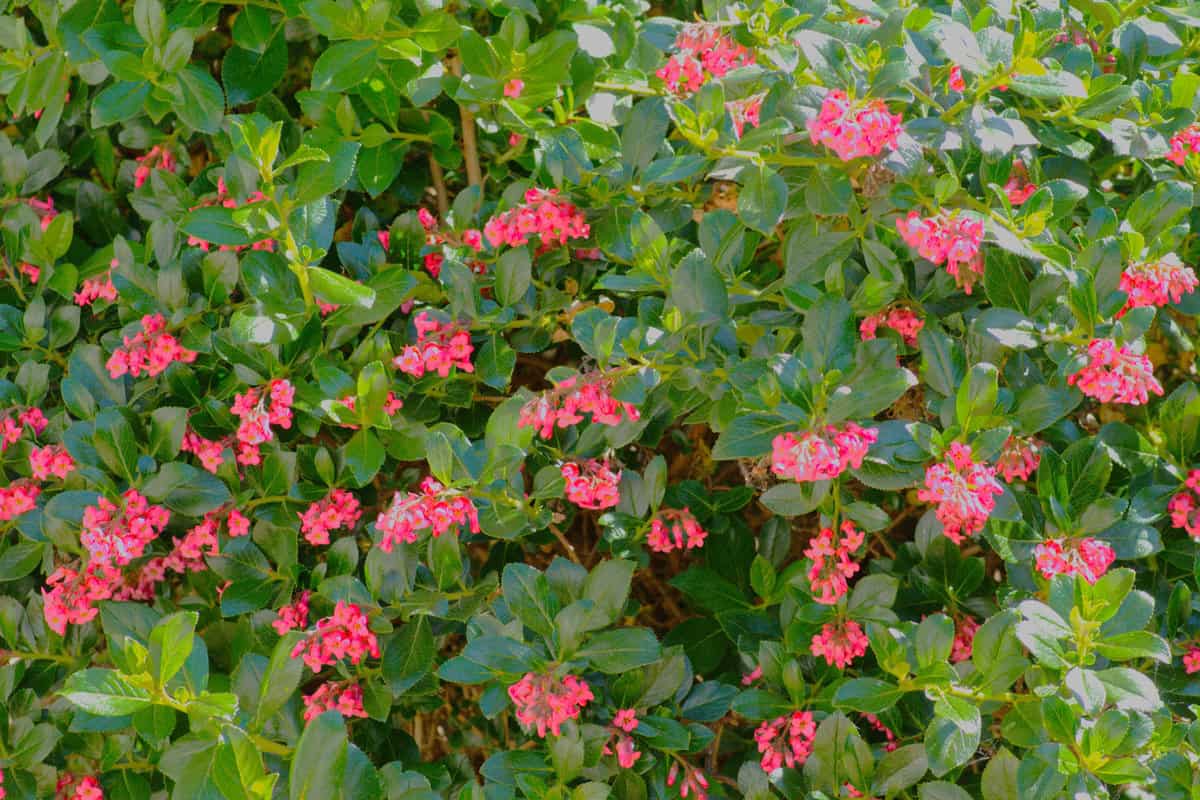Escallonia is a versatile plant known for its salt spray tolerance and attractive flowers in white to red hues. Its adaptability makes it an appealing choice for coastal gardens.
If you're planning to add this to your garden, you might be wondering if Escallonia has invasive roots.

In this article, we will look into the root system of Escallonia and explore its potential for invasiveness.
Find out what steps you can take to ensure its growth remains manageable and harmonious with the rest of your garden.
Escallonia Characteristics
Escallonia is a versatile group of plants, as it includes around 50 species of evergreen shrubs and small trees.
These attractive plants often have glossy and dark green leaves, providing an appealing presence in your garden.

One of their most alluring features is the funnel-shaped flowers that come in white, red, or pink, which also attract bees.
You may find that Escallonia works well as a screen plant or hedge, as they perform well in full sun areas, but they can also tolerate partial shade in particularly hot climates.
Get this Escallonia live plant on Amazon.
Are Escallonia Roots Known to be Invasive?
Escallonia is not known for having an invasive root system. This means you can plant them in your garden without worrying too much about potential damage to nearby structures or other plants.
However, always consider the specific species and cultivar you're working with and verify if it has any special requirements or growth habits.
When planting Escallonia, you'll want to ensure proper placement.
As with any plant, it's a good idea to maintain proper spacing from nearby structures to avoid any potential issues.
Also, since these plants need regular watering, their roots may grow more extensively to seek out moisture if not provided adequately.
This growth can sometimes encroach on nearby plants, so it's important to maintain a proper watering schedule for your garden.
Controlling Escallonia Growth
Escallonias don't have invasive roots, but they can still grow quite large, so it's essential to keep them in check.
To maintain a healthy Escallonia, it's crucial to provide the right growing conditions.
Full Sun
Make sure your plant is situated in an area with full sun but be aware that it needs partial shade in very hot climates.
This means you should choose a location in your garden that gets a good amount of sunlight but also has some moments of shade throughout the day.
Regular Watering
It's also important to offer regular watering, especially during the growing stage, as Escallonia thrives in well-drained, moderately moist soil.
Since Escallonia is drought-tolerant, you won't need to water it excessively, especially once the roots are established.
Nonetheless, regular watering, especially during the establishment phase, is crucial for its growth.
As a general guideline, monitor soil moisture and water when the top inch of soil feels dry. Be careful not to over-water, as this can lead to root rot or other problems.
Pruning
Pruning is an effective way of controlling the size and shape of your Escallonia.
It's best to trim your plant during the early spring before new growth starts, as this prevents damage from frost.
Regular pruning will help keep your plant compact and ensure it remains a manageable size.
However, always be careful not to cut back too much, as this can cause stress to your plant.
Barriers
In the unlikely event that you do notice invasive root growth, you can try installing barriers to protect your garden.
Dig a trench around the area where you want to limit the root spread and insert a root barrier.
This trench will help to prevent the roots from growing beyond the designated area and encroaching on other parts of your garden.
What is the Lifespan of an Escallonia?
Typically, escallonia plants have a long lifespan. While it is difficult to pinpoint their exact lifespan, you can expect these evergreen shrubs to last for many years.
It seems an Escallonia's lifespan largely depends on its care, management and variety.
For instance, the Escallonia Rubra can live 20 to 50 years while other sources indicate 10-15 years.
They can live a long life provided they are well-cared for and planted in the right conditions.
Does Escallonia Grow Quickly?
Yes, Escallonia is known for its relatively fast growth rate of about 25 to 45 cm per year.
Depending on the specific variety and the growing conditions provided, an Escallonia can grow quite rapidly.
However, its speedy growth can also mean it requires regular pruning to keep it in check and maintain the desired shape or size in the garden.
Escallonia is Non-invasive and Can Live for Decades!
Escallonia does not possess invasive roots.
This means gardeners can incorporate this vibrant plant into their landscapes without worrying about it overwhelming or hindering the growth of neighboring plants.
Its non-invasive nature, paired with its resilience and attractive features, makes Escallonia not just a safe choice, but a delightful one for gardens everywhere.
Learn more about the root systems of other plants in these articles:
Does Lilac Have Invasive Roots? Insights For Smart Gardening
Does Rosemary Have Invasive Roots? Understanding Its Growth Pattern

